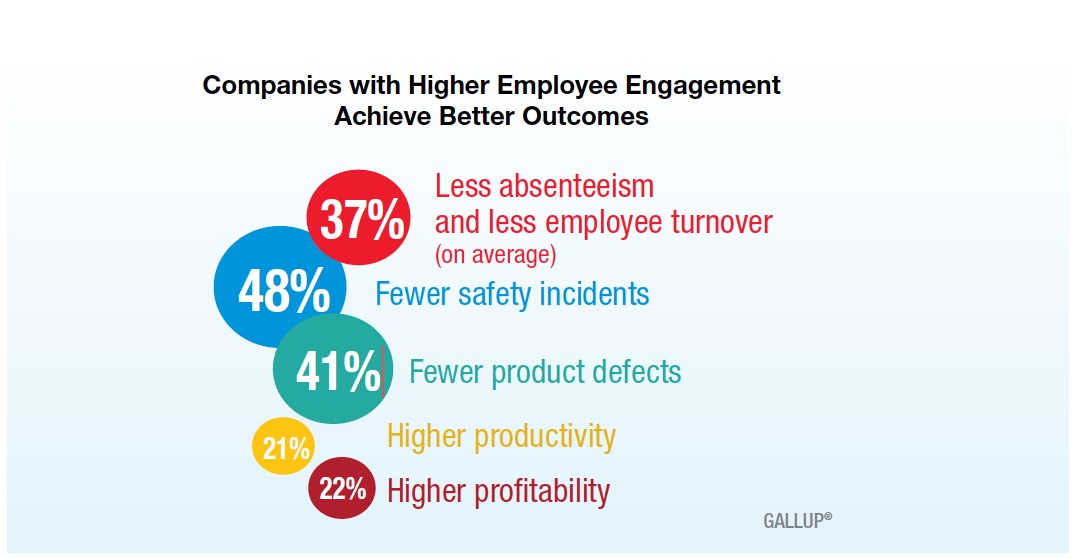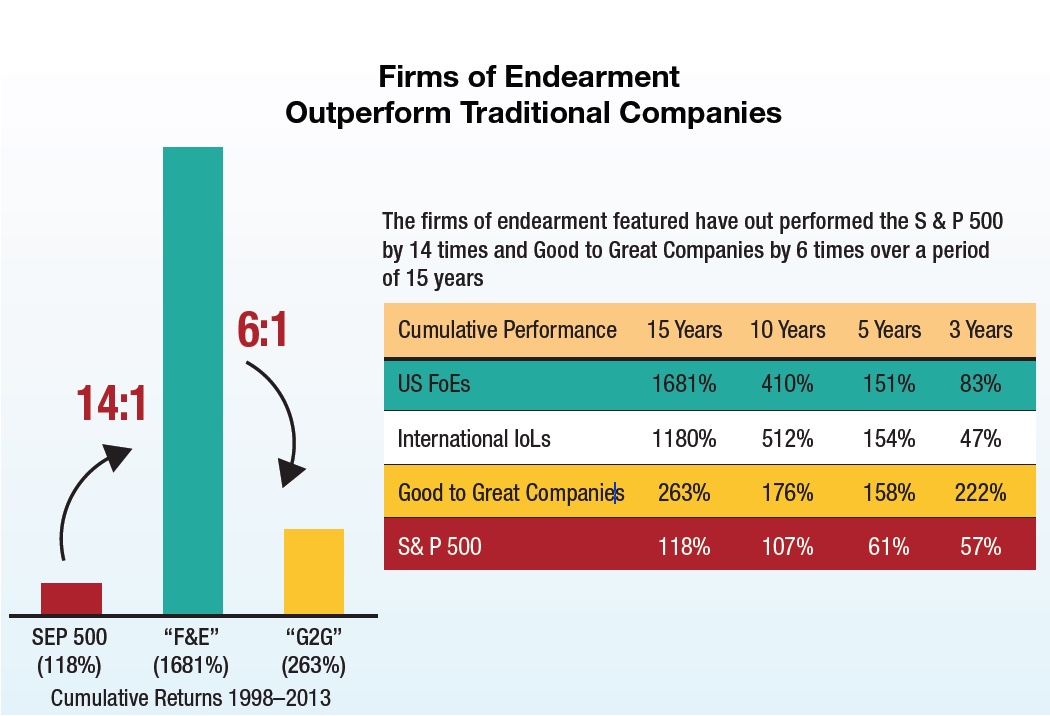Why is people-centric leadership gaining attention from businesses within AME and across the country? Because mounting evidence shows a clear linkage between how an organization treats its people and the organization’s profitability.
When leaders foster a culture where employees feel truly valued, involved in decisions and supported to achieve their full potential, employees give more of their ideas and effort to the business. This translates into higher productivity, better customer service and stronger financial results.
According to Gallup’s research, people-centric organizations outperform their competitors, because they care about their employees, are proactive about associates’ growth and development, take their ideas seriously and fully utilize their strengths. A few well-known examples of organizations with people-centric cultures are Barry-Wehmiller, Costco, Gore, Honda, L.L. Bean, Patagonia, REI, Toyota, Trader Joe’s and Whole Foods. The leaders of these organizations know that building strong relationships with their employees creates a better workplace. Placing a high value on employees creates a culture where team members feel excited about their work and energized to contribute their best.
Placing a high value on employees creates a culture where team members feel excited about their work and energized to contribute their best.
Over the past few years, AME has designed and improved a day-long workshop that covers the six traits of people-centric leadership. At the 2017 AME International Conference in Boston, Lisa Weis, an AME People-Centric Leadership 101 faculty member, led a workshop that provided the opportunity for 30 leaders to team up and think about what kind of leaders create a people-centric culture.
Leaders from Australia, China, Canada and the U.S. shared their experiences with people-centric skills such as:
• Building relationships, so team members feel their opinions matter, their talents are important and they have a social bond with the workplace
• Practicing self-reflection to develop a more mindful leadership style
• Providing clear goals and coaching on problem-solving
• Entrusting employees with significant responsibility and supporting them to achieve quality results
While it’s a challenge to provide a simple description of great leadership, showing what it looks like can help. When Weis asked the class to illustrate practices of good leaders by drawing what great leadership looks like, some universal themes emerged—themes like being a strong support system for your team, fostering positive relationships, supporting employee growth, providing challenges, and balancing employee and company needs.
One of the PCL 101 class members shared his drawing of what great leadership looks like, which included:
• Leading with heart and head
• Helping team members
• Fostering teamwork
• Recognizing employees
• Listening
• Sharing good times and bad times together
During the AME PCL workshop, the class also explored how creating stronger social connections with employees creates a high-performing company culture with higher employee engagement.
Why PCL?
In a fast-paced, competitive economy, it’s normal to question whether paying attention to employee needs helps a company improve its bottom line. AME’s PCL workshop is designed to answer this question—not just with anecdotes, but with evidence and best practices from successful top leaders and their companies. The class viewed videos featuring top leaders with people-centric styles who have turned organizations around by connecting with and valuing the opinions of every employee.
The AME workshop also shared research from Gallup and other organizations. The research shows that when people feel supported, valued and respected, the company achieves better outcomes. According to Gallup, companies that truly value and respect employees have higher employee engagement. Their engagement scores tie directly to higher productivity, higher profitability and better customer service.
Gallup’s research also shows people-centric organizations have fewer of the negative side effects found in cultures that overlook employee needs. According to Gallup, organizations with high employee engagement have lower absenteeism, less turnover, fewer workplace accidents and fewer defects.
These are all costs that detract from productivity and profitability.
During the PCL workshop, class members took time to build relationships with their small groups and discuss how they could improve skills, such as:
• Building effective communication skills to build and strengthen relationships
• Becoming better listeners, so employees feel like their opinions matter
• Making recognition and celebration a way of life, so employees feel appreciated
• Developing people through coaching
• Giving everyone the chance to learn and grow in their job and in the organization
It’s not unusual in a company that defines success as beating the competition that paying attention to communication and relationship building skills can seem at odds with company culture. The PCL class helps team leaders discover that building positive, encouraging relationships creates loyalty and enables employees to flourish at work.
As class members discovered through group discussions, creating a people-centric culture requires going beyond a traditional mindset of focusing on production and organizational goals. It requires leadership to balance key outcomes with focusing on employee development, success and well-being. Many leaders in the class intuitively knew this but admitted it can be hard to make the time to focus on employee needs.
How to enhance people-centric leadership skills
The AME PCL workshop covered six learning modules. Through brief lectures linked with experiential exercises, participants deepened their understanding of what leadership practices bring out the best in people.
Self-reflection
Through small group discussions, the class explored how to use self-reflection to “do the work” of improving their leadership skills. Teams discussed how to expand their use of skills like active listening, giving people the latitude to apply their full range of talents at work and coaching for development.
Building relationships
The class explored Gallup research showing that 70 percent of employee engagement scores are a function of their team leader’s behavior. This direct and powerful correlation between how much energy the leader spends strengthening relationships with employees makes or breaks the performance of their team.
The class explored their own experiences with leaders that brought out the best in them and those that caused them to disengage. Through self-reflection, class members increased their awareness of the need to get to know each employee, listen to them, make maximum use of their strengths, trust their abilities and care about them as a person.
Communication and listening
The class explored non-verbal communication and active listening. By testing the actual effects of genuine listening and disinterested listening, the class discovered how a leader’s tone of voice, body language and mood can increase or decrease an employee’s connection to the leader and the organization. The class reviewed evidence showing that 55 percent of a leader’s communication comes from their body language; 37 percent is a function of voice tone, pace and volume; and only 7 percent is verbal.
Coaching for development
One of the key leadership behaviors needed for enterprise excellence is coaching for development. The class explored how leaders can grow employee talents through the practice of lean problem-solving and continuous improvement. Providing challenging problems and coaching employees to solve them is a best practice for building a people-centric workplace. Creating a culture of problem-solvers brings out the best in associates’ critical thinking skills, expands their contributions to continuous improvement and provides employees rewarding challenges.
Celebration and recognition
Weis led the class through a discussion about differences between recognition woven into company culture versus recognition programs administered by human resources. The class discussed the advantages of building an environment that emphasizes appreciation, celebration and frequent recognition. They discovered how regular, personalized recognition helps validate employees’ capabilities and build confidence in their strengths.
Goal setting, feedback and alignment
The class discussed the importance of leaders providing clear goals to team members and using “catch ball” conversations to develop and ensure clear linkages between company strategy and frontline operations’ goals. Participants discussed the use of visual boards and regular team huddles to monitor progress toward goals and identify problems. Growing evidence about people-centric leadership
Growing evidence about people-centric leadership
AME’s People-Centric Leadership 101 class was strongly influenced by Barry- Wehmiller’s Leadership Academy. Bob Chapman, chairman and CEO of Barry-Wehmiller, illustrates in his book, “Everybody Matters,” how people- centric leadership and lean problem-solving has led to outstanding success for the company.
Other companies with people-centric cultures are achieving the same extraordinary results. Like Chapman’s discoveries, research described in “Firms of Endearment: How World Class Companies Profit from Passion and Purpose,” shows how companies with people-centric cultures have outperformed more traditional organizations. The study by Sisodia, Wolfe and Sheth shows that caring about employees and customers improves the bottom line.
The best way to create a high-performance organization
By the end of the workshop, class members understood the role people-centric leadership plays in fostering a highly engaged workforce, which in turn leads to a high-performing organization.
They also realize that building a culture where employees’ ideas matter and they are entrusted to do quality work allows employees to achieve their full potential. The ripple effect in the culture enables the company to reach its full potential. Said one participant of the workshop held at AME Boston 2017: “Thoroughly enjoyed and got a lot of value from this workshop. I see this work as addressing what has been missing in so many organizations in lean and SPD implementation.”
Roy Plaeger-Brockway, MPA, is director of Lean Diffusion, Olympia, Washington, and a member of AME’s People-Centric Leadership team. He led Washington State’s first lean transformation in government and is a recipient of the Governor’s Award for Leadership in Management. Learn more about AME’s People-Centric Leadership program, including the upcoming PCL 101 event on March 28 in Lawrence, MA, on AME’s People-Centric Resources page.


